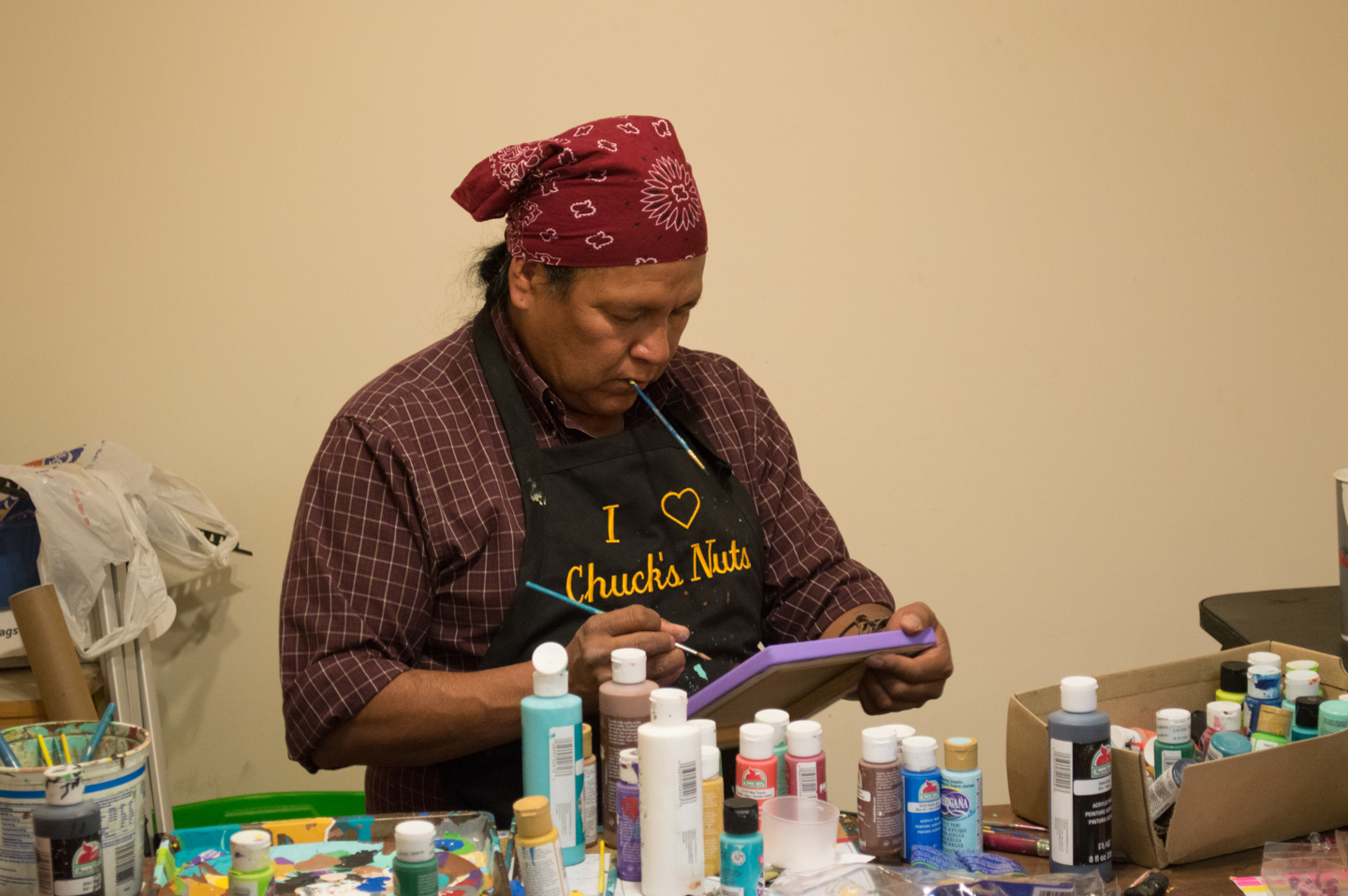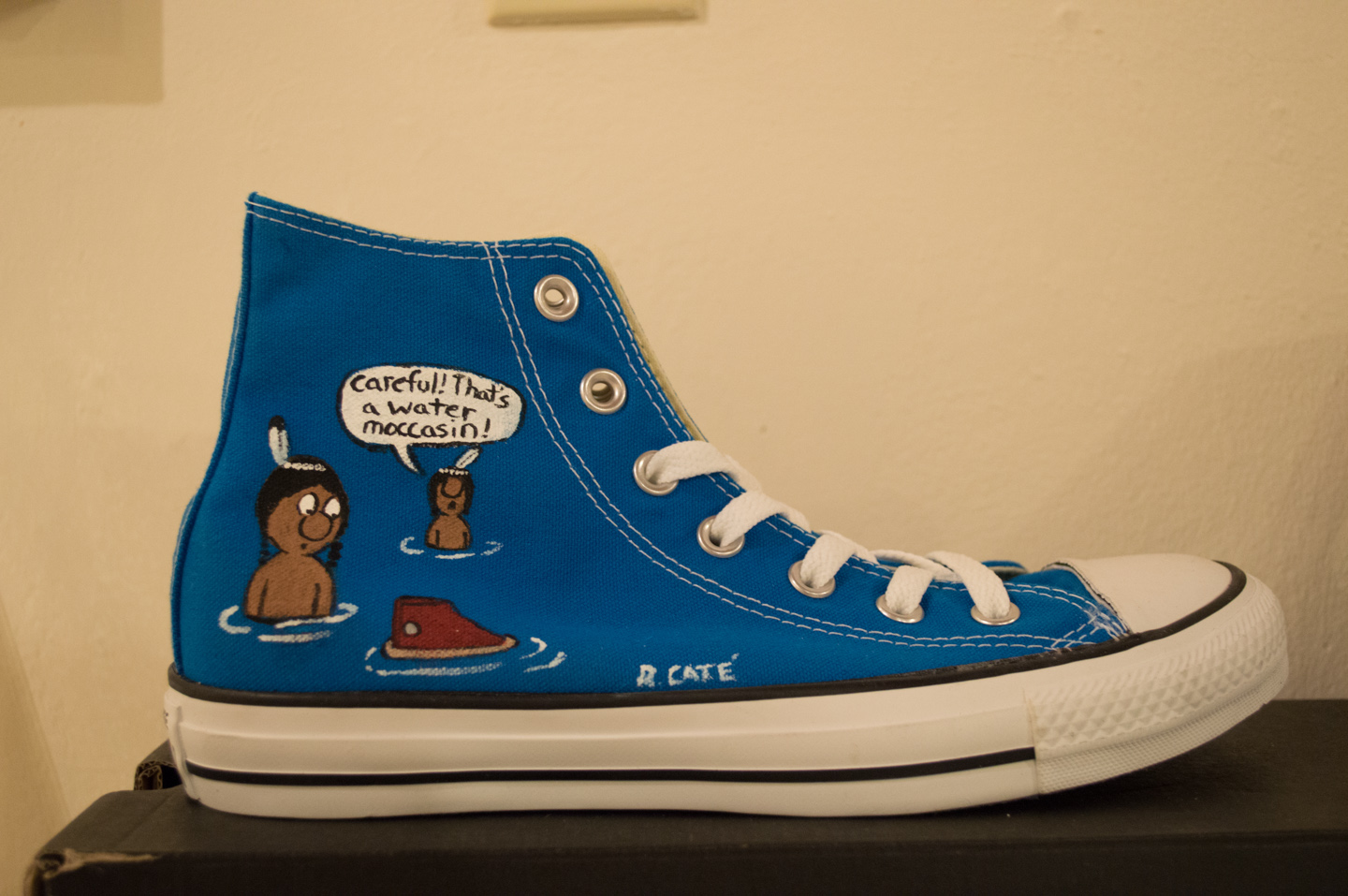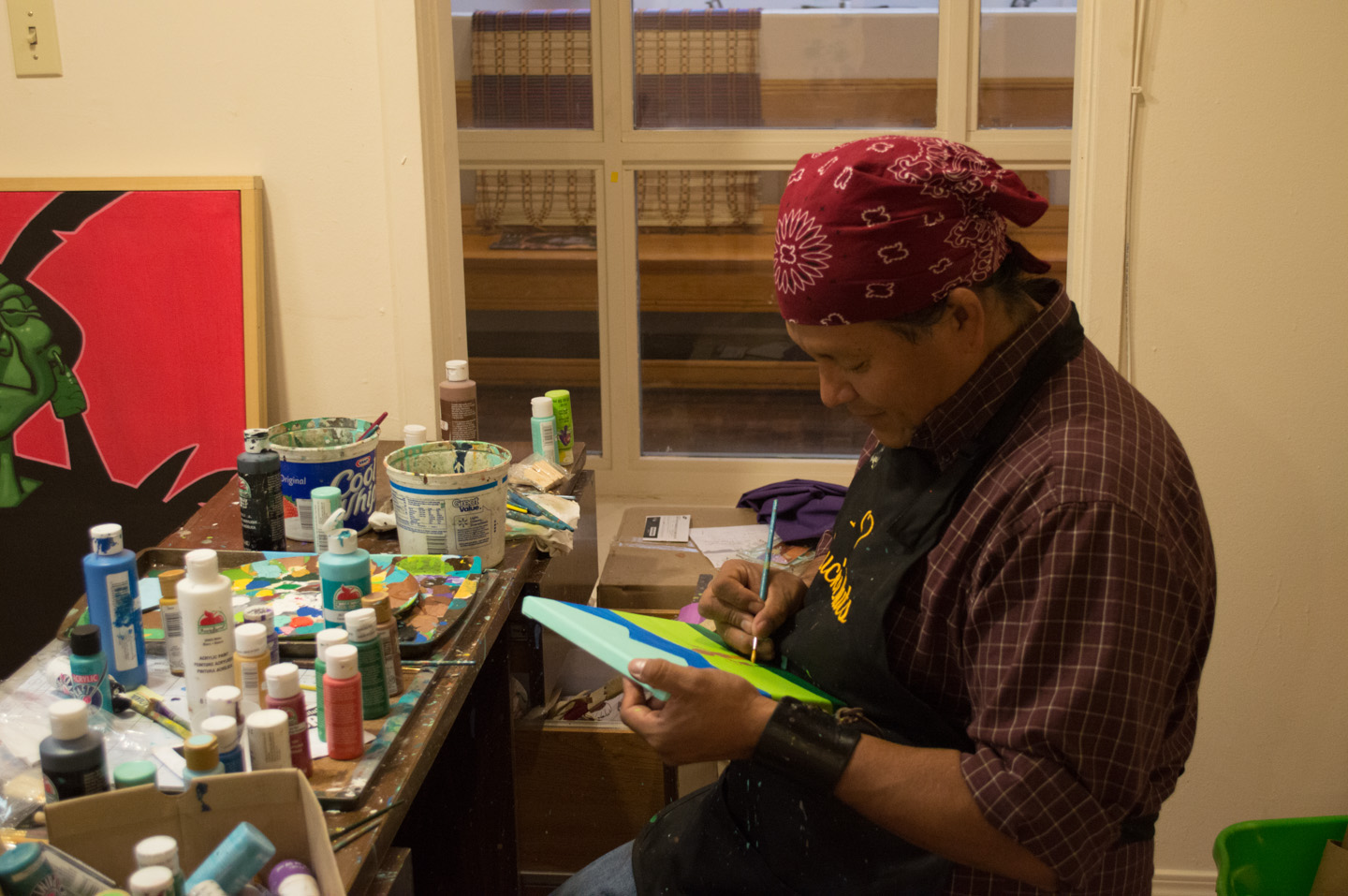Student reporters in the NATV 450 T/Native American Digital Journalism course at the University of New Mexico who contributed to this profile: Matthew Burr; Kateri Eisenberg; Valerie Epaloose; Jesse Gallegos.
Ricardo Caté a cartoonist from Kewa Pueblo in New Mexico, is a man who has fallen many times, but has gotten back up and stood taller than he did before.
“Humor is really, really cool, to figure out a way to make everyone laugh,” Caté said.
Caté loves making people laugh with his cartoons.
“I could stir up anger in a heartbeat, but why do that? I’d rather make people laugh,” Caté said.
His ideas come from real life experiences including many from his own life and childhood.
“My mind is kinda twisted,” and “I don’t just walk, I observe, I see something and can make it funny,” he said.
Since he was a little boy, he loved to run. He ran track in high school. He attended Ignacio High School in Ignacio, Colorado. He was so fast that the University of Nebraska wanted to recruit him so he could run and represent their school. This was an opportunity of a lifetime for him. Unfortunately his father became ill and he had to move back to New Mexico to take care of his family. Although, this move ended his dream of becoming a runner, Caté attended the University of New Mexico. He partied a lot because he wasn’t a runner anymore and it devastated him, he was not interested in school and after two semesters he dropped out of school.
It was during this time that Caté was homeless and hanging around the military recruiting station. One day when he heard a racial slur about “stupid Indians”. He took the military entrance exam to prove his point to these individuals, he passed, missing only one question. It was then he decided to enlist in the U.S. Marines. Caté traveled around the world and came back home to Kewa, enrolling at the UNM again in 1990, but then took a break in 1993 to raise his three children.
At age 40, Caté returned to school at Fort Lewis College in 2004, Caté’s cartoonist career began by signing up for the campus newspaper The Independent. Caté described himself as being quiet and constantly doodling during his newspaper meetings. He got his break when a story fell through and it opened up a full blank page in the paper. A friend had seen Caté’s doodles and suggested that he submit them for the blank page, he presented his doodles to the team and his first cartoon was published under the title Fort Leisure in 2005. In the same year, as a result of his talent, Caté was urged by his editor to attend the American Indian Journalism Institute, sponsored by the Freedom Forum Neuharth Center at the University of South Dakota. While attending Fort Lewis, Caté also hosted a radio show on KDUR-FM in Durango, Colorado.
Durango is also the place where he started to do stand-up comedy, “I had very, very humble beginnings. I made enough money to feed my kids,” and “If you have a chance to make someone laugh, with this or that, then do it,” Caté said.
Caté’s Fort Leisure was well received, leading to an offer from the tribal newspaper The Southern Ute Drum to do cartoons, which he titled Caté’s World. In 2006, he earned a Bachelor of Arts in Interdisciplinary Studies from Fort Lewis College.
Caté is really into his community he said, “You are obligated to serve your community.” He loves the idea of people coming together as one by lending a helping hand and sharing. He was an elementary and middle school teacher for a while. After teaching middle school, he taught General Educational Development testing classes.
Caté said, “If you have a story to tell you can make a movie like the next guy.” He has used his creativity and motivation to make two short films and which included his GED students in the production of Reservation Blues. A second short film tells the story of his brother and himself as children titled Happy Dayz, both available on YouTube with a third film is in production.
Caté sets an example by teaching people that no matter how many times you fall, you have to get back up and try.
“Every time you go down, you have no place to go but up,” Caté said.
In the fall of 2006, he went to The New Mexican to seek a job as a reporter or even a photographer. Unfortunately, there were not any openings, but then he asked about a cartoonist position. He presented his drawings and after some persuasion he was hired. His first cartoon appeared in The New Mexican on October 17, 2006, titled Without Reservations. Caté has been working for The New Mexican for eight years now and has published a book of his cartoons called Without Reservations.
In the beginning, Caté received a lot of negative feedback from people who saw his cartoons. Many thought that they were just racist cartoons. He would personally write back to them to explain exactly what he meant by the cartoon and soon people started to “get” the pictures and develop an appreciation for them. His characters ‘The General’ and ‘The Chief’ represent the interactions between the non-Native and Native American cultures.
Most days you will catch him at his studio near the Santa Fe Plaza and occasionally he is a host on KSFR-FM in Santa Fe, New Mexico. His cartoons are carried in two other tribal newspapers the Two Rivers Tribune of Hoopa, California and the Osage News of Pawhuska, Oklahoma. Caté’s new found goal is to become the first Native American to win a Pulitzer Prize as a political cartoonist.
His career has had its ups and downs, but in the end, he has become successful because his cartoons tell a story.
“I feel I have this voice that people see and hear and it would be a waste to not use it and share it,” Caté said.
Dawn of Nations Today is a publication created by the NATV 450/T Native American Digital Journalism course taught by instructor Mary K. Bowannie and lead professional mentor Andrea D. Hanks, as part of the Native American Studies department at the University of New Mexico. Dawn of Nations Today past editions can viewed at http://nas.unm.edu/don-archive.html








